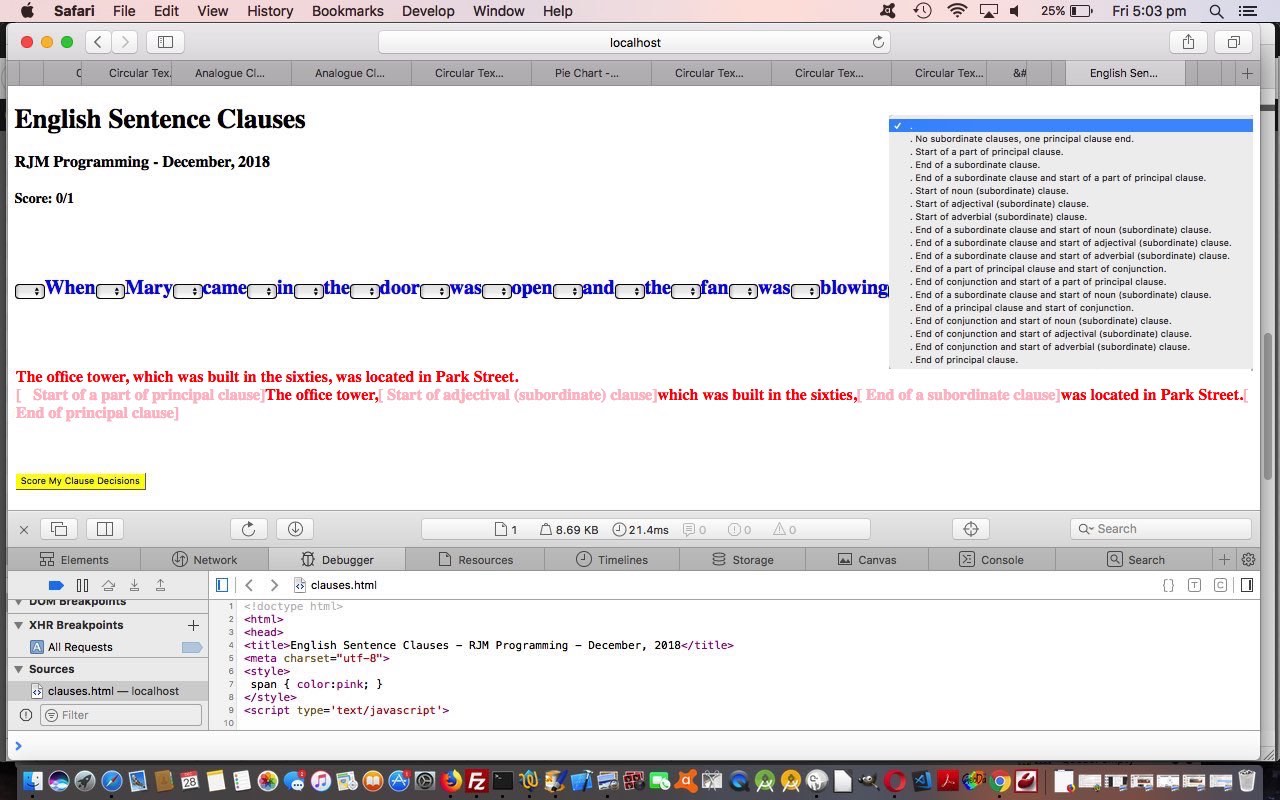An English sentence is a wonderful and flexible part of the English language. In essence, most sentences we express in English, can be broken up into clauses, which are, to quote Text Types in English by Mark Anderson and Kathy Anderson (ISBN: 0-7329-4584-4) …
A clause is a complete thought expressed in words. It must include a verb or verb group.
… to the extent that a single principal clause can become an entire sentence, which fits in with an adage we were taught at school, that “all English sentences contain a verb”.
In today’s web application clauses.html‘s game, ideally suited to ESL students, we ask the user to try to see where clauses start and end within sentences, and along the way the user may learn a bit more about …
| Clause type | Definition |
|---|---|
| Principal clause | A principal clause contains a finite verb and has meaning on its own. |
| Subordinate clause | A subordinate clause contains a finite verb and has no meaning on its own. |
| Noun (subordinate) clause | A noun (subordinate) clause can be the subject or object of a sentence. |
| Adjectival (subordinate) clause | Adjectival (subordinate) clauses provide information on the person, place or thing that they are associated with. |
| Adverbial (subordinate) clause | Adverbial (subordinate) clauses are like adverbs, providing information about the action. |
Maybe it will straighten out a few things in your mind about how English works!
If this was interesting you may be interested in this too.




If someone is your subordinate, they have a less important position than you in the organization that you both work for.